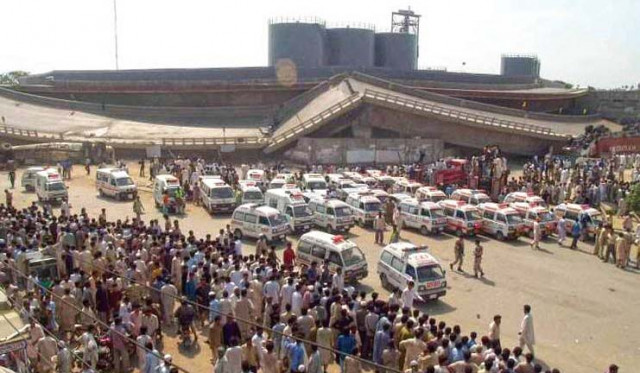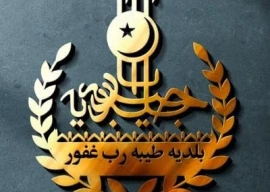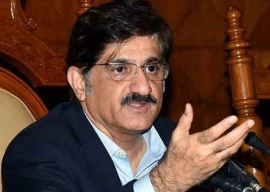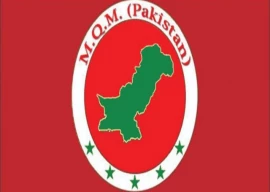
A five-year long legal battle ended in disappointment for the families of the five men who were crushed when a portion of Shershah bridge collapsed in September 2007.
The additional district and sessions judge, West decided to acquit nine accused over a lack of evidence.
“Today the court has really done something remarkable,” said Kazim Raza, whose brother Rizwan Raza was one of the five victims. “Justice really is blind.”
The five men died and fourteen others were trapped when a portion of the bridge collapsed a month after Pervez Musharraf had inaugurated it. The collapse was attributed to a possible design fault after which a long legal battle ensued.
It was only after the Supreme Court ordered it that an FIR, No. 181/ 2010, was registered and investigations were carried out by the SITE police.
One of the victims, 60-year-old Moosa, was a resident of Saeedabad and the father of six children. He used to run a donkey cart. Fayyaz Ahmed Khan, 40, also had six children and lived at Lasbella Chowk. Rizwan Shah, 31, had two small children as did 51-year-old Ali Mohammad, who lived at Shershah. Sixteen-year-old Shahzad lived in Saddar,
“How was this decision made?” asked Abdul Haq, the brother of Fayyaz Ahmed Khan. “No one called us and took our statements. They were all in cahoots with each other, how can poor people fight when it’s like that?”
He said that he went to court for each hearing date but no one recorded his statement. “What am I going to tell his children? That I couldn’t get them justice?”
The acquitted men are Choudhry Altaf Ahmed, the chairman of the National Highway Authority (NHA) at the time, its former chairman Major Gen (Rtd) Farrukh Javaid, general manager Colonel (retired) Tehseenul Haq, general manager for construction Yousuf Barakzai, a member of NHA planning, Syed Najamul Hasan, and the owners of the contract construction firm ECIL, Athar Mirza, and his two sons Khalid Mirza and Naveed Mirza.
Yousuf Barakzai, the construction GM, represented by Shaukat Hayat advocate, was acquitted a week back, and today the remaining eight men were set free.
Their counsel submitted that no FIR was lodged by the heirs of any of the victims as they had been paid compensation after intervention by the apex court. A sum of Rs1.5 million each was paid to the heirs of six victims and Rs500,000 went to each of the 14 people who were injured.
The general manager for design at NHA, a key technical witness in the case, could not point a finger at any of the accused to hold them responsible for the charge of criminal negligence leading to the loss of lives.
The men were booked under sections 322, 421, 427, 337-F and 34 of the PPC.
The prime minister’s inspection committee declared that it found that the structural system and design was ill-conceived; there was criminal neglect on the part of M/s ECIL contractors; the land required for a good geometric design was never considered nor was the land negotiated for the prospective design ever acquired by NHA. “The neglect on the part of NHA is the root cause of collapse.”
It said the responsibility for the disaster at the organizational level “lies with M/s ECIL and NHA” and several officials by name were held responsible in both organizations.
In November 2010, the current chairman of the NHA was arrested from a courtroom but the former chairman, Farrukh Bashir, managed to escape from the scene. The police had been ordered to arrest them after their bail was rejected.
Investigation officer SP Iftikhar submitted the final charge sheet absolving the top NHA officials and consultant firm of any responsibility in the collapse. A day before that, the SP submitted in the charge sheet that project director Barakzai was appointed after the blueprints were approved and while the construction was under way.
The bridge is a curved box girder bridge and its outer track collapsed at the point where it makes a 101-degree angle. Its initial design was made by ECIL and it was built by the National Logistics Cell. But problems developed and the design was changed. ECIL asked Messer Hyperstatic of Cyprus to help.
The construction started in August 2003 but the problems surfaced in March 2006. The full bridge was completed in 2007 at a cost of Rs340 million. It was opened for traffic on May 10, 2007 and formally inaugurated by the president on August 6. It collapsed on September 1. The prime minister’s inspector team took five months to investigate.
Published in The Express Tribune, May 15th, 2012.


















COMMENTS
Comments are moderated and generally will be posted if they are on-topic and not abusive.
For more information, please see our Comments FAQ